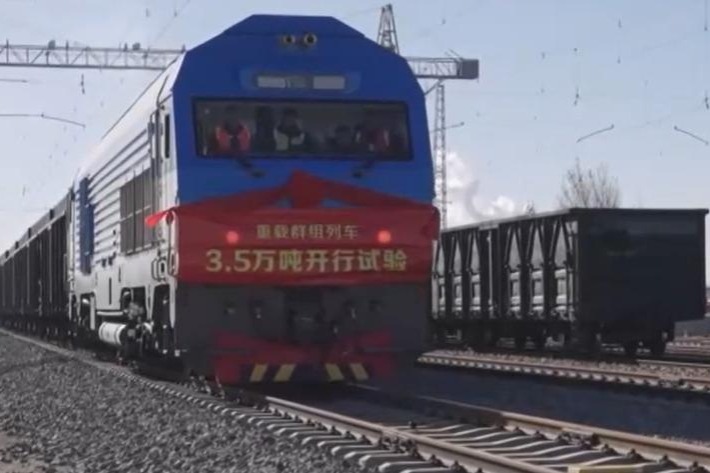Busy time ahead for logistics firms

Shanghai free trade zone offers good growth prospects for global majors
In many areas, the steps taken in carrying out reforms remain cautious and foreign investors are still waiting for detailed policies, but the China (Shanghai) Pilot Free Trade Zone is steering a steady advance in at least one sector.
As the name suggests, trade and logistics are the priority. It is also where some key industrial players are eyeing big changes.
Among them is the world's largest logistics company DHL, which was selected as the first in the sector to test the waters of the international transshipment business in the pilot area.
The company, headquartered in Germany, has launched its first international transit air route that offers transfers in Shanghai. It is also the first of its kind to operate on the Chinese mainland.
The new route could save eight hours out of the three-day journey from the German city of Leipzig to Tokyo compared with the old route via Hong Kong, according to Qian Xiaorong, a project manager at the DHL North Asia logistics center at the Pudong International Airport, which handles the operation of the new route.
In the center, cargo from international transshipments is unpacked, sorted and repackaged according to destinations, without having to receive customs checks or pay duties.
During the day, the center seems somewhat empty with only a handful of workers, but Qian says at night there are hundreds of employees working onsite sorting the parcels. The process can be finished within four hours.
As a key index to measure the internationalization level of an airport, international transshipments usually account for more than 50 percent of the total cargo volume at hub airports.
As the largest cargo airport in China and the third-largest worldwide, Pudong airport handles 3 million tons of cargo a year.
However, before international transshipment was introduced in the free trade zone, such cargo could only go to Japan or Singapore.
"Shanghai has the potential to become an international hub for cargo transport because it is better positioned than Hong Kong and Singapore, in terms of being a shorter distance to Europe and the United States," says Qian.
Such an advantage becomes more apparent when using the polar route that flies over the Arctic, which could save up to four hours of flight time compared with traditional routes, she says.
With only one route, the center seems to be underutilized with its 88,000 sq m area and a capacity to handle 40,000 parcels and envelopes per hour.
"We'll definitely launch more international transshipment air routes next year (2014). One route will not generate enough of a profit margin," Qian says, adding that Hong Kong airport is already somewhat crowded with dozens of such routes in operation.
In the first 10 months of last year, the volume of transshipment cargo at Pudong airport surged by 125 percent compared with the same period in 2012.
Cai Hao, president of the cargo terminal at Pudong airport, says that with the authorities further loosening up the policies in the free trade zone, there would be an increasing demand for transshipment business. The airport operator is ready to upgrade the facilities to meet the expected demand.
As a part of the 28.78 sq km free trade zone, the 1.81 sq km west freight terminal in Pudong airport has enough land reserves, so the airport can further expand air cargo services by utilizing existing resources, Cai says.
In the meantime, a fourth runway at the airport will be put into operation in the first quarter this year. A new satellite terminal, which it is hoped will be complete in 2018, will provide an additional 120 aircraft stands to the existing 70, according to Liu Wujun, chief engineer of the Shanghai Airport Authority, which is responsible for running the two airports in Shanghai.
The air cargo volume at Pudong airport will reach 5 to 7 million tons a year in 2015, Liu said.
The same optimism is also shared at Yangshan Port, the single largest component of the free trade zone in terms of area, which also benefits from the more simplified customs supervision within the pilot area.
Jiang Gongsheng, general manager of Shanghai Shengdong International Container Terminal Co, a major operator at the port, says the establishment of the free trade zone and supportive policies for international trade would further increase the international transshipment volume at Yangshan Port.
"International transshipment is expected to see a dramatic increase in the years to come."
As a deepwater port that mainly operates ocean routes, the proportion of transfer freight at Yangshan Port as a percentage of the total volume of all freight it handles is around 10 percent at the moment, Jiang says.
"According to my knowledge, a number of shipping companies are considering adjusting their routes, including utilizing Yangshan Port as a transshipment port or opening a new route to the port," Jiang says.
Last year, the annual throughput of the Yangshan Port was set to reach 14.3 million TEUs (20-foot equivalent units, a measure of containers). Driven by the Yangshan Port, Shanghai Port's container throughput is expected to achieve 33.5 million TEUs, making the city the largest port in the world for the fourth consecutive year.
The biggest change brought by the free trade zone is a faster clearance process. For example, in the past it would take three rounds of document exchanges to put futures copper in storage. Now it takes just one.
"Such convenience and efficiency will give Shanghai an obvious competitive advantage among large ports in Northeast Asia," Jiang says.
In addition to the first batch of six companies that received permission to ship their goods into the free trade zone before declaring them, Shanghai customs authorities recently announced that another 41 companies would also get the same policy preference.
Jiang says that the fourth phase of the Yangshan Port is now taking shape. The three-kilometer additional shoreline formed by marine reclamation will extend the port's shoreline by 60 percent and help fulfill Shanghai's ambition to become an international shipping hub by the end of this decade.
The container throughput at Shanghai Port has been growing at a sluggish pace after taking a dive during the 2008 financial crisis. Since then it has averaged 4 percent and will remain low for quite a while in the future, research by global consulting firm Accenture showed.
Zhu Jingfeng, director of freight, logistics and port business with Accenture Asia-Pacific, says the free trade zone would give Shanghai a new growth opportunity.
An area that has a convenient environment for trade and investment, free currency exchange and efficient regulatory and legal norms will help to transform the test area into a "global territory" and vigorously promote the development of transshipment, he says.
weitian@chinadaily.com.cn
(China Daily Africa Weekly 01/03/2014 page20)
Today's Top News
- Momentum built for future industries
- FM: Facts prove Tokyo wrong onTaiwan
- Japanese call for retraction by Takaichi
- Shenzhou XXI astronauts conduct their 1st spacewalk
- Global openness, cooperation stressed
- China not necessarily relying on Nvidia for chips, ecosystem






























